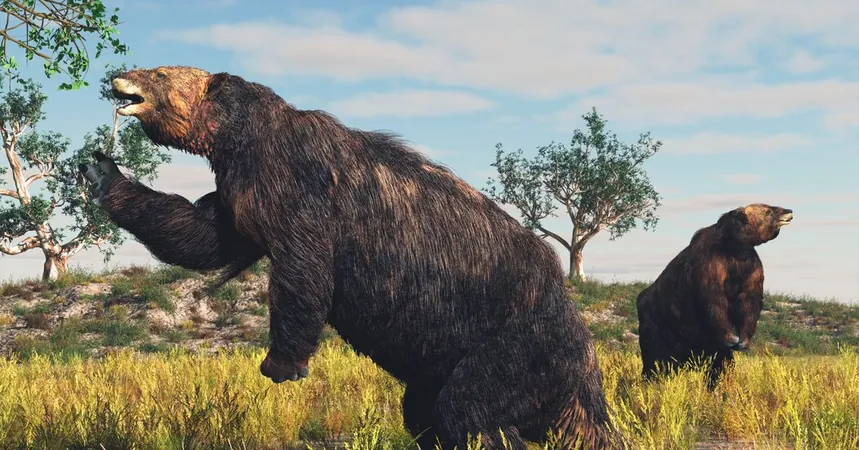
Unveiling the Hairy Secrets of Giant Sloths: What Scientists Discovered!
2025-04-03
Author: Yan
Ground sloths, fascinating prehistoric mammals, roamed the Earth millions of years ago, originating from South America and spreading all the way to Canada. Unlike their diminutive tree-dwelling relatives that still thrive today, these colossal creatures could rival modern elephants in size and occupied diverse habitats from land to seashores.
Researchers have spent years piecing together the puzzle of what these extinct giants looked like, especially concerning their fur coverage. Although some ground sloths are known to have had abundant fur from preserved pelts, the extent of hairiness in other species has remained a mystery.
Recent groundbreaking research published in The Journal of Mammalian Evolution sheds light on this enigmatic topic. The study reveals intriguing new insights about the body temperature and fur characteristics of these ancient mammals.
The variations in ground sloths' habitats, ranging from warm tropical regions to frigid climates, complicated the researchers' efforts. Among the giants, the megatheres, specifically Eremotherium and Megatherium, stood out as some of the largest terrestrial mammals of their era.
In an innovative approach, the researchers led by Dr. Robert Eagle and Dr. Aradhna Tripati from UCLA, analyzed fossilized teeth to assess the body temperature of these ancient animals. Their findings were striking: they discovered that the core body temperature of these giant sloths rested between 84 to 89 degrees Fahrenheit, notably lower than that of most large mammals we find today.
By utilizing advanced three-dimensional computer modeling, they reconstructed the estimated surface area and body volume of various sloth species. Adjusting their models for environmental factors like wind speed, humidity, and sunlight, they aimed to establish a “thermal comfort zone” for each species.
The results for Megatherium were particularly surprising. Regardless of its environment, the models indicated that it likely sported a "thick, dense, furry pelt." In contrast, Eremotherium displayed a distinct adaptability when it came to its fur coverage. Depending on whether it lived in the chilly Andes or warmer tropical climates, it might have had varying fur densities or potentially shed its coat during warmer seasons.
As further evidence emerged, Michael Butcher, a professor at Youngstown State University, pointed out that these ancient giants, much like today's tree sloths, likely practiced energy conservation in their lifestyle, albeit at a much larger scale.
While praising the study’s innovative models, Mariana Di Giacomo, a natural history conservator at the Yale Peabody Museum, emphasized the need for more comprehensive data. She expressed hopes for the team to gather more fossil samples from various geographic locations to strengthen their conclusions.
In conclusion, the research not only emphasizes the adaptability of giant sloths but also opens the door for exciting inquiries into the lives of these magnificent creatures. What other secrets about prehistoric life are waiting to be uncovered? Stay tuned to find out!

 Brasil (PT)
Brasil (PT)
 Canada (EN)
Canada (EN)
 Chile (ES)
Chile (ES)
 Česko (CS)
Česko (CS)
 대한민국 (KO)
대한민국 (KO)
 España (ES)
España (ES)
 France (FR)
France (FR)
 Hong Kong (EN)
Hong Kong (EN)
 Italia (IT)
Italia (IT)
 日本 (JA)
日本 (JA)
 Magyarország (HU)
Magyarország (HU)
 Norge (NO)
Norge (NO)
 Polska (PL)
Polska (PL)
 Schweiz (DE)
Schweiz (DE)
 Singapore (EN)
Singapore (EN)
 Sverige (SV)
Sverige (SV)
 Suomi (FI)
Suomi (FI)
 Türkiye (TR)
Türkiye (TR)
 الإمارات العربية المتحدة (AR)
الإمارات العربية المتحدة (AR)